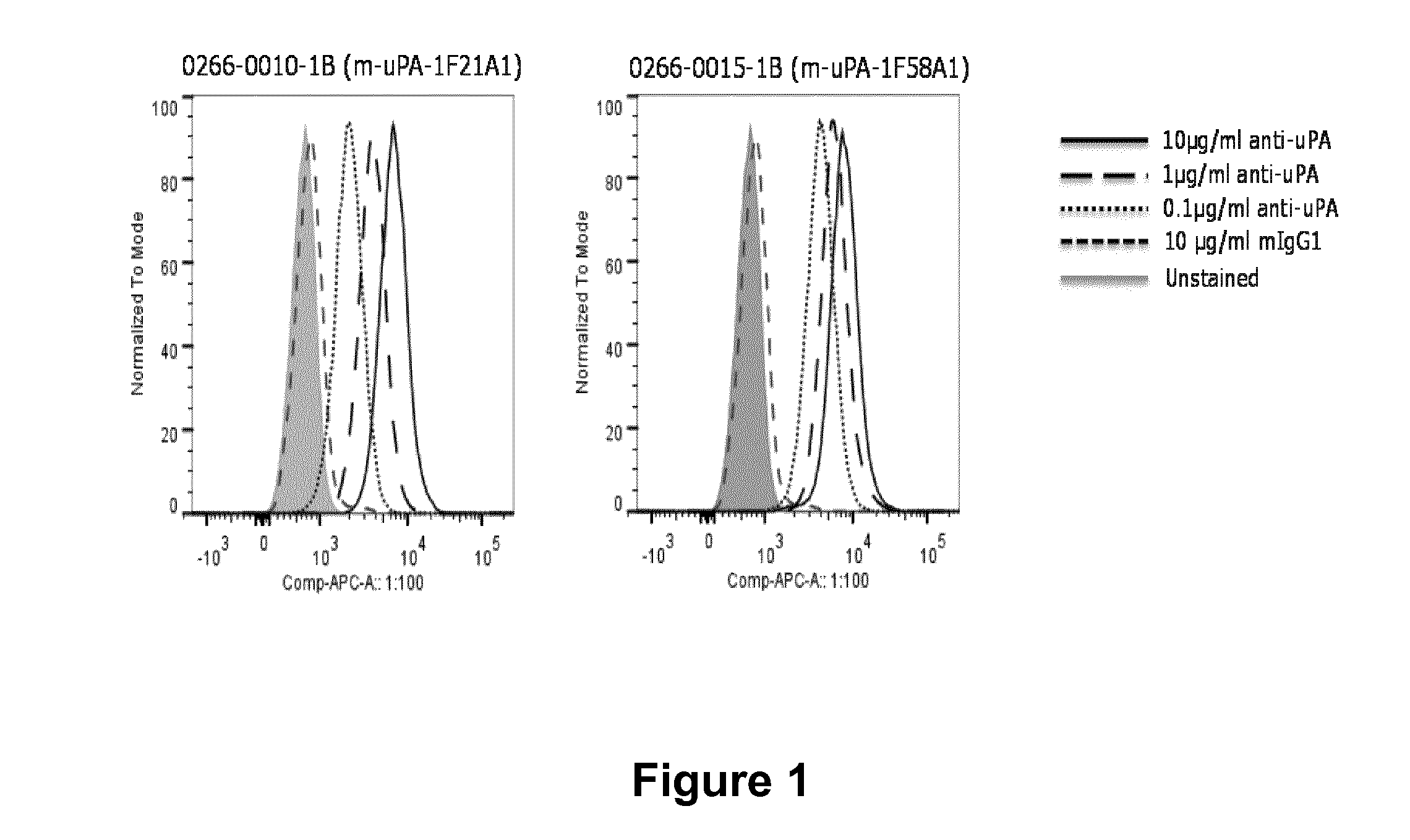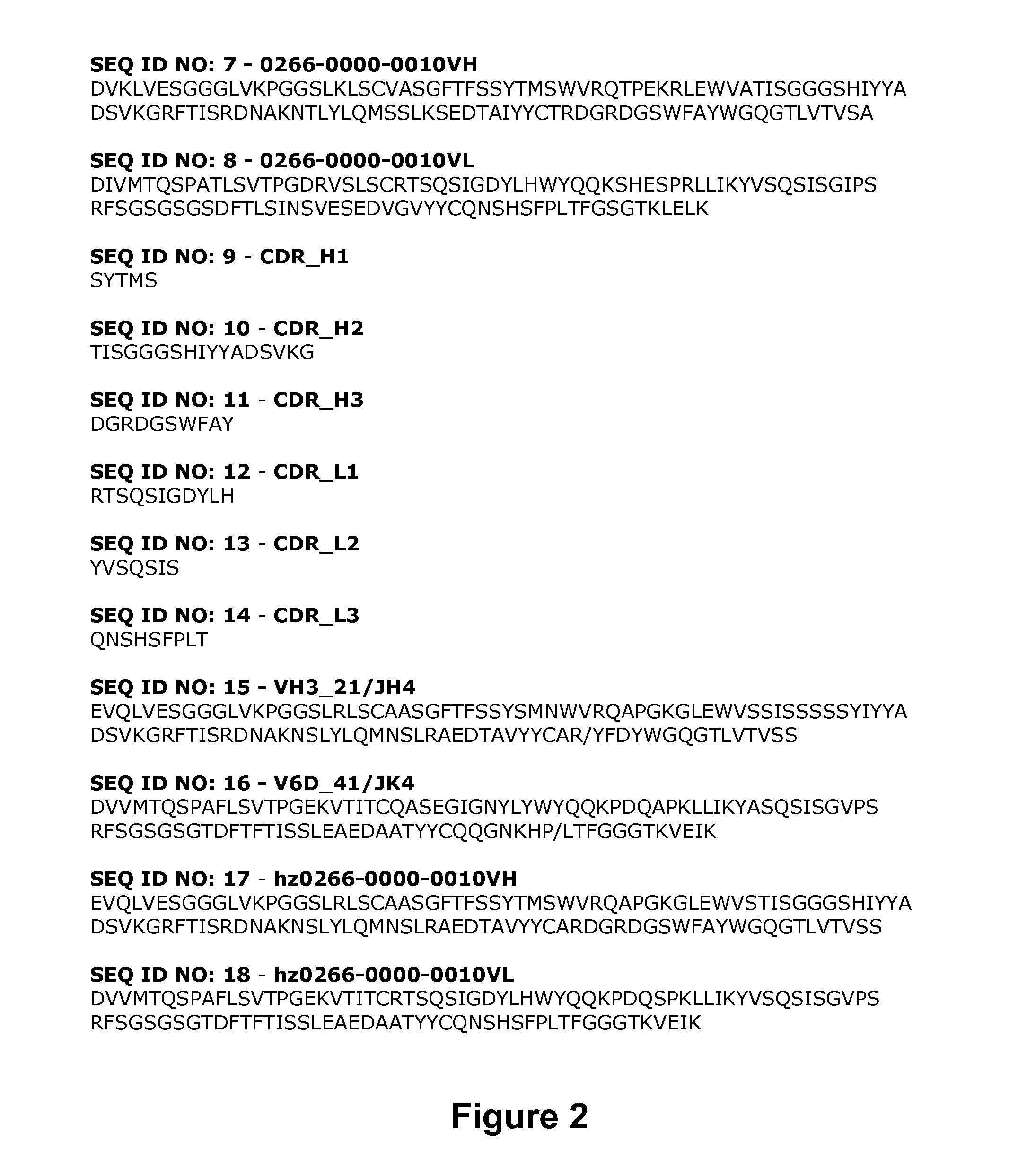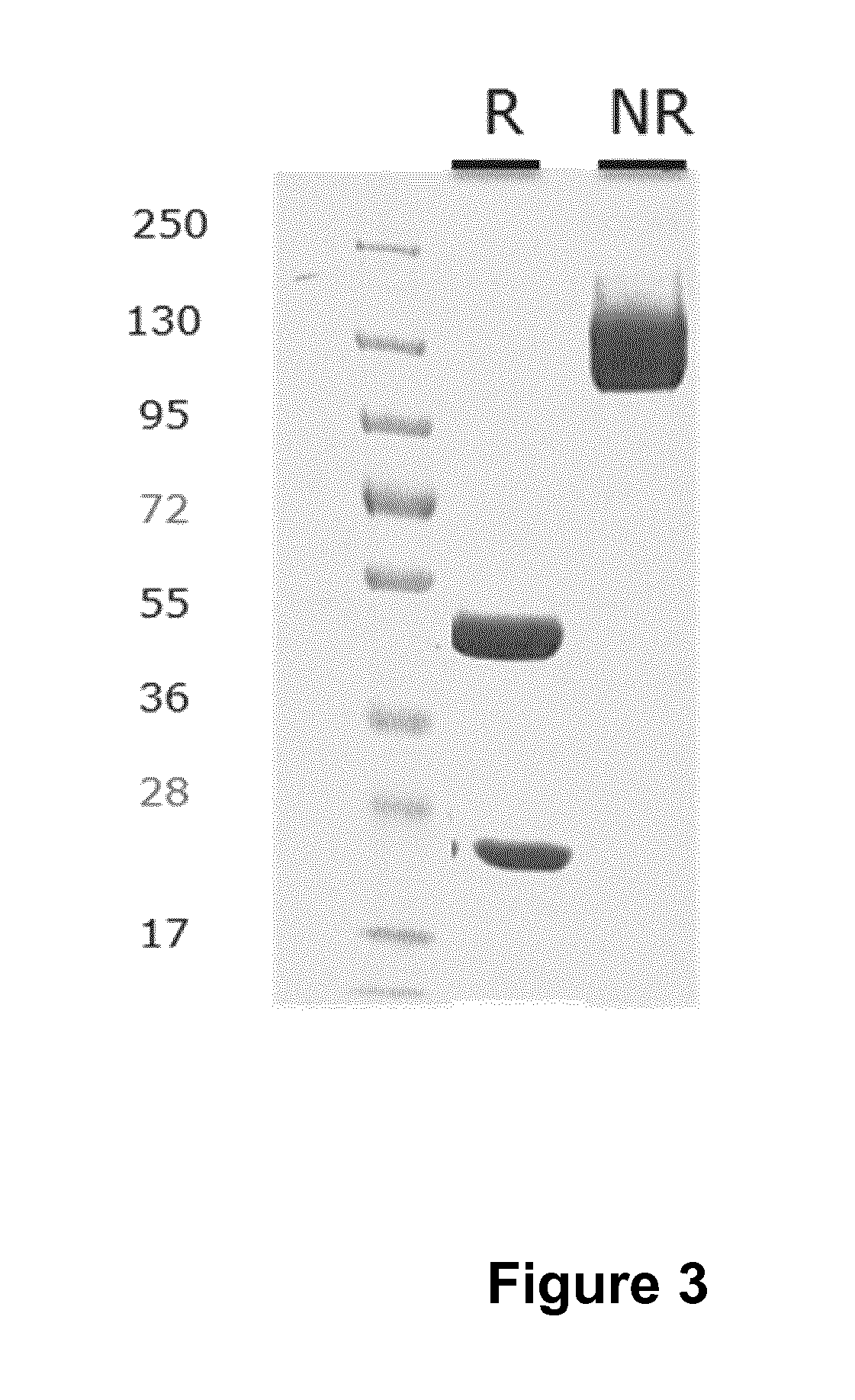Anitbodies That Bind Urokinase Plasminogen Activator
a technology of urokinase and activator, which is applied in the field of identification of urokinase plasminogen activator (upa) antibodies, can solve the problems of not being suitable for use within the scope of this application, and known upa antibodies are not known to be able to inhibit, so as to achieve potent inhibition of the overall proteolytic cascade reaction, inhibit both proteolytic reactions, and inhibit the effect of proteolytic activity
- Summary
- Abstract
- Description
- Claims
- Application Information
AI Technical Summary
Benefits of technology
Problems solved by technology
Method used
Image
Examples
example 1
Production of Human sc-uPA
[0276]For expression of recombinant human sc-uPA (SEQ ID NO: 1), the full length cDNA sequence was synthesized (SEQ ID NO: 2) and cloned into a mammalian expression construct with CMV promoter by standard techniques. The generated expression plasmid was denoted as pJSV-human pro-uPA. All constructs were verified by DNA sequencing. In the cDNA sequence of human sc-uPA (SEQ ID NO 2), the nucleotide sequence encoding the mature sc-uPA protein is preceded by nucleotide sequence encoding a 20 amino acid signal peptide [MRALLARLLLCVLVVSDSKG]. This signal peptide is not present in the mature human sc-uPA protein.
[0277]Recombinant wild-type human sc-uPA proteins was expressed in human embryonic kidney 293 cells (HEK293) by transient transfection, using 293Fectin™ Transfection Reagent (Life Technologies—Invitrogen, Carlsbad, Calif., USA). The cell culture medium was harvested 72 hours after transfection.
[0278]The recombinant wild type sc-uPA protein was purified by ...
example 2
Production of Cynomolgus sc-uPA
[0279]For expression of recombinant cynomolgus sc-uPA (SEQ ID NO: 3), the full length cDNA sequence was synthesized (SEQ ID NO: 4) and cloned into expression vector pcDNA3.1+(Invitrogen, Carlsbad, Calif., USA) with a 6×His tag at C-terminus (by standard techniques. The generated expression plasmid was denoted as pcDNA3.1-cyno pro-uPA-6×His. In the cDNA sequence of cynomolgus sc-uPA (SEQ ID NO: 4), the nucleotide sequence encoding the mature sc-uPA protein is preceded by nucleotide sequence encoding a signal peptide that based on homology between the human and cynomolgus sequences is predicted to be 20 amino acids long [MRALLAHLLLCVLVVSDSKS]. The exact identity of the signal peptide for cynomolgus sc-uPA has not been established. The signal peptide is not present in the mature cynomolgus sc-uPA protein.
[0280]Recombinant cynomolgus sc-uPA protein was expressed in HEK293 cells by transient transfection, using 293Fectin™ Transfection Reagent (Life Technolo...
example 3
Generation of Monoclonal Anti-uPA Antibodies
[0282]In order to generate mouse monoclonal antibodies (mAb) RBF mice were immunised with recombinant human sc-uPA (SEQ ID NO: 1).
[0283]Mice were immunised subcutaneously. For the first immunisation, 20 μg of antigen was mixed with complete Freund's adjuvant. In subsequent immunisations incomplete Freund's adjuvant was used with the same amount of antigen. Ten days after the last immunisation, eye-blood from the mice was analysed by ELISA for uPA-specific antibodies. Mice with positive titers were boosted intravenously with 10 μg antigen in PBS, and sacrificed after three days. The spleens were aseptically removed and dispersed into a single cell suspension. Fusion of spleen cells and myeloma cells was performed by electrofusion. Hybridomas secreting specific antibodies were selected using a specific binding assay as described in example 5.
PUM
| Property | Measurement | Unit |
|---|---|---|
| concentration | aaaaa | aaaaa |
| concentration | aaaaa | aaaaa |
| pH | aaaaa | aaaaa |
Abstract
Description
Claims
Application Information
 Login to View More
Login to View More - R&D
- Intellectual Property
- Life Sciences
- Materials
- Tech Scout
- Unparalleled Data Quality
- Higher Quality Content
- 60% Fewer Hallucinations
Browse by: Latest US Patents, China's latest patents, Technical Efficacy Thesaurus, Application Domain, Technology Topic, Popular Technical Reports.
© 2025 PatSnap. All rights reserved.Legal|Privacy policy|Modern Slavery Act Transparency Statement|Sitemap|About US| Contact US: help@patsnap.com



